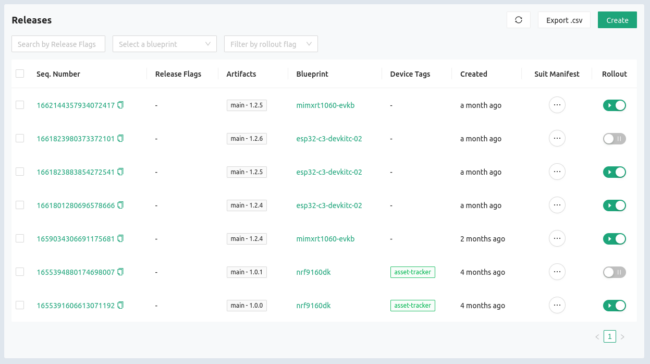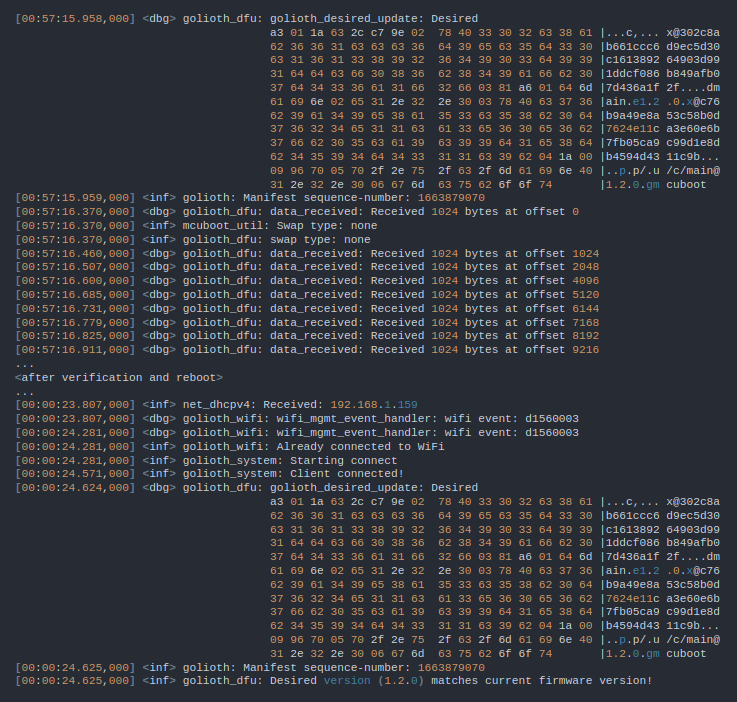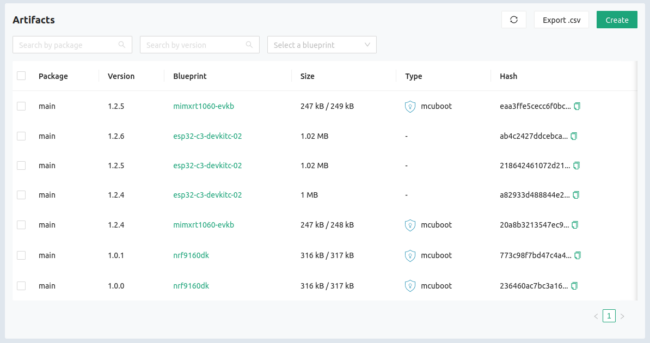Internet of Things (IoT) devices are meant to be out in the world, sending back sensor data and providing remote control for all kinds of automation. That provides an interesting challenge when you want to update the way the device operates. Updating device firmware Over-The-Air (OTA) is a critical feature of every IoT deployment.
While OTA updates go by a number of names (DFU, FOTA, etc.) Golioth specializes in making these features available and easy to manage for huge fleets made up of numerous different hardware variants.
OTA Is Difficult
We know what you’re thinking… your design is feature complete when manufactured, why update the firmware? Just kidding, we know you’d never say that. This isn’t about how well you can write the device code today. Including the ability to remotely update firmware will extend the service life of your products, whether it’s adding features you haven’t yet thought about, or patching security vulnerabilities that don’t currently exist. Everyone needs this!
So why aren’t firmware update features more common in embedded devices, especially those that are going to be IoT devices? In short: because it’s difficult!
When an engineer starts a new embedded project, it is almost always local to their development laptop or desktop. They compile and flash “hello world” to their embedded device and then try to get an LED blinking. If the engineer is starting with a simple main.c file and expecting to build things up from there, they need to layer on network stacks, IP handling, message parsing, and a bunch more just to talk to the internet. Then they need to set up the Cloud side of things. Maybe the engineer expects they can fetch from a file hosting service–not the best, but it works in a pinch. But what about managing the entire process? You could implement remote control to tell a device when to update, but that requires even more Cloud side code. Or you can choose to do device-side control that determines when and how to run an update. In both cases, you also need to understand how to properly interact with the device bootloader without bricking the device in the field.
When engineers have this many tasks to get OTA going, it’s no wonder this task is left for “some day”.
How Golioth Manages OTA Updates
As a device management cloud, Golioth delivers all of the tools you need for dependable OTA. That means associating new firmware binaries with specific hardware variants in your fleet, using a rollout process that informs the device a new version is available, and confirming the state of the currently running firmware. Among the most popular Golioth features is a one-click roll-back to previous firmware version.
Golioth is secure by default. Firmware is downloaded over an encrypted connection, the signed binary is verified before upgrading, and devices validate that the new binary works before completely switching over.

You can segment your fleet for early testing using our tagging feature. Then roll out new firmware to just a few devices to ensure all is well before taking the plunge on upgrading everything. When you need to troubleshoot a device, the history of its last update is readily available on the Golioth Console or via our REST API.
Take Golioth OTA for a test drive
With Golioth’s Dev Tier, your first 50 devices are free. That’s more than enough to test out OTA, alongside all the other fun features of Golioth like time-series data, the device settings service, and remote procedure calls.
Currently you can choose from two different Golioth SDKs: Zephyr or ESP-IDF.
Golioth OTA using Zephyr
The Golioth Zephyr SDK is a cross-platform solution that currently offers first-class support for the nRF9160 (cellular), mimxrt1060-evkb (Ethernet), ESP32 (WiFi). Any device that uses Zephyr as the Real Time Operating System (RTOS) and uses MCUboot as the bootloader should work with Golioth.

Begin with the Golioth Quickstart that will walk through the process of signing up for the Dev tier. Move on to the hardware section to install and configure a Zephyr workspace. Then checkout the DFU (device firmware update) sample from our SDK.
Golioth OTA using ESP-IDF
Anyone working with devices from Espressif should consider using the Golioth ESP-IDF SDK. It currently offers first-class support for all chips in the ESP32 family.
Begin with the Golioth Quickstart that will walk through the process of signing up for the Golioth Dev tier. Move on to the hardware section to install and configure an ESP-IDF workspace. Then checkout the golioth-basics sample from our SDK which includes a well-commented example for using the OTA feature.
Managing firmware update is a critical piece of IoT
Problems on one device sitting on a workbench can be solved by plugging in a cable and updating the firmware directly. One thousand devices spread out over a country (or even merely separated from that firmware engineer) is a very different problem. The ability to update devices in the field means you’re not sending your coworkers to tilt at windmills in faraway lands.
Building and maintaining an OTA system is not a trivial operation, and at Golioth we pour our time and energy into getting it right. This means building with time-tested, industry leading open-source tools like MCUboot, and leveraging our vast experience in the IoT industry to plan for challenges long before you face them.
Give our Dev Tier a try and you’ll be up and running before you know it. Stop by our Forums, our Discord, or send us an email if you get stuck.



No comments yet! Start the discussion at forum.golioth.io